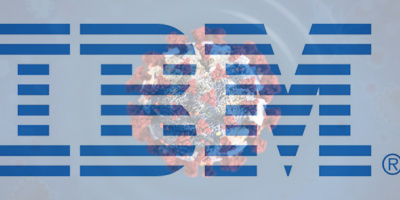Every year, 10 million computers wind up in the nation's landfills. There, they are reunited with some portion of the 11.4 billion tons of hazardous waste that corporations annually confer upon the planet-the collateral damage from manufacturing and resource extraction. Economists have a bloodless though painfully accurate term for it: externalized costs.
"Business," contends Paul Hawken in his portentous book The Ecology of Commerce, "is the most powerful entity on the face of the globe, and as it is being conducted today, is destroying life on earth." Precisely because of its dominance and the wealth of intellect it commands, argues Hawken, business is also the only institution capable of solving global environmental problems. If Lester Brown of World Watch Institute is right and "every living system on earth is in decline," there is an urgency for corporations to shift from a degenerative to a restorative economy-an economy that is inherently sustainable.
IBM, once the preeminent polluter in the electronics industry, has taken huge strides to make its products, and the processes that produce them, environmentally responsible. I'm told that in Rochester, Minnesota, the home of the AS/400, and at IBM's 42 other global manufacturing, development, and research sites, products are being evolved that are safe to use, energy efficient, respectful of the environment, and can be recycled or disposed of without risk. I want to believe it.
"We used to focus almost exclusively on the waste stream," Debbie Horn, an IBM environmental engineer told me, "but now the focus is on the entire product life cycle." "Waste stream" refers to the alluvium of manufacturing; released pollutants that infect the air, water, and soil. In the 1980s, Rochester was one of the three largest chlorofluorocarbon (CFC) emitters in the United States. The other two were IBM sites in Endicott, New York and San Jose, California. As late as 1987, IBM's global operations used 12.4 million pounds of these ozone-shredding chemicals and another 24.7 million pounds of methylene chloride and methyl chloroform, chemicals used in the manufacture of semiconductors, circuit boards, and storage devices.
Today, Rochester has completely eliminated CFCs and methyl chloroform from its manufacturing process, by substituting water-based cleaning systems and organic solvents. Methylene chloride has been 99.9 percent eliminated. These reductions far exceed the Environmental Protection Agency's 33/50 guidelines which called for reducing emissions one-third by 1992 and one-half by 1995.
This is goodness. But I also know that IBM dragged its feet for more than a decade. In 1981, IBM joined the Alliance for a Responsible CFC policy, an industry consortium of CFC manufacturers, users, and distributors. The consortium hired the lobbying firm Alcake, Rousselot and Fay to influence government regulation of CFCs. Its goals were to slow down the phasing out of CFCs until 1996 and to approve the continued manufacturing of dangerous CFC alternatives like HCFCs (hydrochlorofluorocarbons). Which IBM should I trust?
On the other hand, the company as a whole has reduced its releases of industrial chemicals reported under the U.S. Toxic Release Inventory requirements by 81 percent from 1987 levels. (There are 300 such chemicals, and IBM uses 28 in amounts large enough to report.) To protect ground water, storage tanks and pipes have been moved above ground, and monitoring devices have been installed to detect leaks. Hazardous waste transferred to off-site locations for treatment and storage is down 59 percent. In Rochester, over 70 percent of the waste generated from the development and production of the AS/400 is recycled.
"It all starts with design," says John Mahanna, manager of Product Safety and Environmental Engineering in Rochester. "How a product is designed determines the materials and energy used to make it and how it will be disposed of." The Advanced Series AS/400s are designed to be about 25 percent smaller, requiring fewer structural materials, and are up to 33 percent more energy efficient. A programmable power-on/shut-down feature further reduces energy requirements by decreasing secondary energy needs from devices such as air conditioning and uninterrupted power supplies.
No longer do computers inevitably wind up as land fill. Rochester has established a center for returning AS/400s when customers no longer need them. Last year, the facility processed 500 systems. A full 98 percent of the parts were either reconditioned and used as new, used by field personnel as replacement parts, or recycled. The system itself is designed for easier disassembly and separation into component or material types. Each part is labeled, identifying it as reusable or recyclable. Packaging is also designed to minimize waste; Rochester uses unbleached fiberboard boxes. The only AS/400 parts decaying in the dumpster are tape cartridges containing the operating system and the small plastic labels used to identify various components.
Full life-cycle responsibility for a product is a new concept gaining acceptance in Europe, and may become legally mandated in the United States. Companies may soon be required to "take back" packaging and products of all types when consumers no longer want them. The obligation of disposal encourages efficient product design with reusable components and minimal packaging. This time IBM is not waiting for legislative prodding.
Reductions in the use of toxic substances have paid dividends in worker safety. According to statistics compiled under the Occupational Safety and Health Act (OSHA), IBM employees report less than half the industry average work-related illnesses or injuries, which is less than a quarter of the national average. IBM's Fujisawa, Japan site recorded a mind-numbing 43 million hours-that's twelve years-without a single lost-time injury. The Rochester facility has been honored for 13 consecutive years by the Minnesota Safety Council for its ergonomics and safety program. Additionally, Rochester has received three state and one federal award for solid-waste and pollutant-source reductions.
Such accomplishments re-quire top-down commitment. IBM Chairman Louis Gerstner noted: "The world's environmental problems are too real and immediate-as well as long-term in their implications-for anything but total commitment on the part of those who have the capacity to do something about them."
I agree. Again, I so want to believe. Then I remember that just two years ago Mr. Gerstner headed another corporation, RJR Nabisco, which routinely trotted out cigarette scientists who insisted that smoking and the hundreds of secret chemicals sprayed on tobacco were good for you. Someone much wiser than I once said, "it's not easy being green."
But in Rochester, the commitment Gerstner spoke of is alive and embodied in the Environmentally Conscious Products Team; 25 people representing disciplines from design to disposal, who work together to provide AS/400 customers with a product that is as environmentally benign as today's technology permits.
The standards Rochester observes for the use, disposal, and emission of polluting substances are also applied to its suppliers. Vendors are certified and required to maintain an environmental ethic. IBM works with its suppliers to improve their manufacturing processes, providing environmental engineers as consultants and generously sharing its nonpolluting technologies with vendors and other companies in the electronics industry.
The investment in pollution prevention has produced substantial cost savings at many sites. In San Jose alone, environmental programs have resulted in reductions of hazardous waste by 1,096 tons, and eliminated the discharge of 36.2 million gallons of waste water at a savings of $4.6 million.
These are measurable and meaningful results, and IBM has pursued them with tenacity and a substantive commitment of intellectual and financial capital. IBM's most notable failing, as far as I can determine, is its seeming reluctance to brag about its commitment to environmental goals. IBM's accomplishments signal a hopeful and commendable maturation because, as Hawken points out, "It is time that we stop pretending that industries which degrade and poison are economic and useful."
Corporations have historically been schizophrenic about their environmental responsibilities, often swatting off social concerns like annoying mosquitoes. On the one hand, business wants to be publicly perceived as green; but on the other, corporations privately lobby to subvert or delay environmental regulations. "Greenwashing" has become the shifty purview of public relations; green not as a way of doing business, but as a way of getting business.
The cumulative environmental impacts of corporate mismanagement have produced public skepticism and distrust. The fundamental question is: Has anything really changed, or are we merely hearing what Hawken calls "the disingenuous voice of corporate communications"? The best way to answer that question is to measure intentions by results. At IBM, the results are clear and, the past notwithstanding, are a cause for both celebration and gratitude.
Victor Rozek has 17 years of experience in the data processing industry, including seven years with IBM in Operations Management and Systems Engineering.





















 More than ever, there is a demand for IT to deliver innovation. Your IBM i has been an essential part of your business operations for years. However, your organization may struggle to maintain the current system and implement new projects. The thousands of customers we've worked with and surveyed state that expectations regarding the digital footprint and vision of the company are not aligned with the current IT environment.
More than ever, there is a demand for IT to deliver innovation. Your IBM i has been an essential part of your business operations for years. However, your organization may struggle to maintain the current system and implement new projects. The thousands of customers we've worked with and surveyed state that expectations regarding the digital footprint and vision of the company are not aligned with the current IT environment. TRY the one package that solves all your document design and printing challenges on all your platforms. Produce bar code labels, electronic forms, ad hoc reports, and RFID tags – without programming! MarkMagic is the only document design and print solution that combines report writing, WYSIWYG label and forms design, and conditional printing in one integrated product. Make sure your data survives when catastrophe hits. Request your trial now! Request Now.
TRY the one package that solves all your document design and printing challenges on all your platforms. Produce bar code labels, electronic forms, ad hoc reports, and RFID tags – without programming! MarkMagic is the only document design and print solution that combines report writing, WYSIWYG label and forms design, and conditional printing in one integrated product. Make sure your data survives when catastrophe hits. Request your trial now! Request Now. Forms of ransomware has been around for over 30 years, and with more and more organizations suffering attacks each year, it continues to endure. What has made ransomware such a durable threat and what is the best way to combat it? In order to prevent ransomware, organizations must first understand how it works.
Forms of ransomware has been around for over 30 years, and with more and more organizations suffering attacks each year, it continues to endure. What has made ransomware such a durable threat and what is the best way to combat it? In order to prevent ransomware, organizations must first understand how it works. Disaster protection is vital to every business. Yet, it often consists of patched together procedures that are prone to error. From automatic backups to data encryption to media management, Robot automates the routine (yet often complex) tasks of iSeries backup and recovery, saving you time and money and making the process safer and more reliable. Automate your backups with the Robot Backup and Recovery Solution. Key features include:
Disaster protection is vital to every business. Yet, it often consists of patched together procedures that are prone to error. From automatic backups to data encryption to media management, Robot automates the routine (yet often complex) tasks of iSeries backup and recovery, saving you time and money and making the process safer and more reliable. Automate your backups with the Robot Backup and Recovery Solution. Key features include: Business users want new applications now. Market and regulatory pressures require faster application updates and delivery into production. Your IBM i developers may be approaching retirement, and you see no sure way to fill their positions with experienced developers. In addition, you may be caught between maintaining your existing applications and the uncertainty of moving to something new.
Business users want new applications now. Market and regulatory pressures require faster application updates and delivery into production. Your IBM i developers may be approaching retirement, and you see no sure way to fill their positions with experienced developers. In addition, you may be caught between maintaining your existing applications and the uncertainty of moving to something new. IT managers hoping to find new IBM i talent are discovering that the pool of experienced RPG programmers and operators or administrators with intimate knowledge of the operating system and the applications that run on it is small. This begs the question: How will you manage the platform that supports such a big part of your business? This guide offers strategies and software suggestions to help you plan IT staffing and resources and smooth the transition after your AS/400 talent retires. Read on to learn:
IT managers hoping to find new IBM i talent are discovering that the pool of experienced RPG programmers and operators or administrators with intimate knowledge of the operating system and the applications that run on it is small. This begs the question: How will you manage the platform that supports such a big part of your business? This guide offers strategies and software suggestions to help you plan IT staffing and resources and smooth the transition after your AS/400 talent retires. Read on to learn:
LATEST COMMENTS
MC Press Online